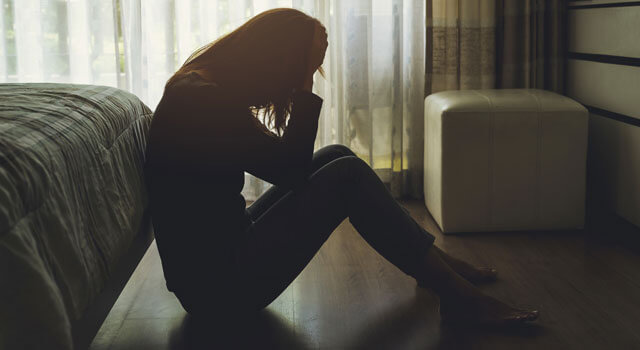What Does Having a Dual Diagnosis Mean?

There has been a lot of discussion in the media over the last several years about the rise and prevalence of mental disorders and substance abuse. While it is sad that our favorite celebrities are falling victim to tragic overdoses and suicides, it has created an environment of communication and research geared towards helping those who are still suffering.
The term dual diagnosis encapsulates a wide variety of mental illnesses that a person can suffer from in conjunction with a drug addiction or substance use disorder. Many rehabilitation centers and treatment centers are now framing their program around treating dual diagnosis individuals as it has been proven to be more common than not.
What Kind of Mental Disorders Qualify?
According to studies and research from treatment centers, hospitals, rehab centers, and psychologists alike, there really is no limit to what sort of mental, mood, or behavioral disorders fall under the category.
As of late, there have been several mental disorders that have risen above the rest in terms of prevalence. They are:
- Bipolar Disorder
- Anxiety Disorders
- Depressive Disorders
- Obsessive Compulsive
- Eating Disorders
- Post Traumatic Stress Disorder
- Learning Disorders
- Schizophrenia
- Borderline Personality Disorder
- Co-Dependent Personality Disorder
- Antisocial Personality Disorder
Researchers are still unclear why these specific mental disorders are more common than others, however, they continue to be the most often diagnosed among therapists, counselors, psychiatrists, and clinicians around the country.
How Does Dual Diagnosis Happen?
People who struggle with dual diagnosis can often think back upon their childhood to remember a time when they may have first noticed a peculiar mental twist or specific behavior that could have been a warning sign to their later diagnosis.
Really, it is different for each person, as everyone experiences different events and has different brain chemistry, however, the main school of thought is that most mental disorders arise out of a culmination of events, learned behaviors, and thought processes that develop over a person’s lifetime.
One of the most common triggering events is when a child experiences a dramatic or traumatic experience. This could be anything from:
- Divorced parents
- Death of a loved one
- Abuse in the home
- Addiction in the home
- Sexual abuse
- Car accident
- Absent parent
- Injury
- Bullying
The list can go on and on and will depend solely on the individual. Over time, the child or person will begin to create and enforce certain thought patterns, behaviors, and beliefs that can eventually lead them towards experimentation with drugs and alcohol.
There is no question why people enjoy drinking or relaxing with a pill or a plant, but for people who have unresolved traumas or irregular emotional or mental disturbances, these substances can begin to become the solution to their problems.
Little by little, the individual can become more reliant on the drugs and alcohol as a form of self-medicating, that the dual diagnosis solidified with an addiction.
On the other hand, mental disorders can also arise out of prolonged and excessive drug and alcohol use. For example, people who have a chemical dependence on a drug like cocaine can develop obsessive-compulsive tendencies, heightened levels of anxiety, and can be subjected to traumatic experiences as a result of their substance abuse. This, in turn, can cause the development of a mental disorder, therein leading the individual to a dual diagnosis.

Can People With Dual Diagnosis Get Better?
While treatment processes for dual diagnosis are known to be more challenging than simply drug addiction, it is possible for people to heal and grow. The tricky thing about it is diagnosing it properly.
For example, many practitioners can often overlook symptoms of a mental disorder, as many of the side effects of drugs and drinking can mimic those of common mental disorders. This is especially true when an individual is not completely honest about their history, their using behaviors, or their mental or emotional state with their doctor or therapist.
The most commonly overlooked symptoms in dual diagnosis disorders are:
- Depression
- Insomnia
- Anxiety and panic
- Nightmares
- Paranoia
- Aggression, irritability, and rage
- Hypersexuality or participation in dangerous behaviors
- Intense mood swings
- Isolation
- Suicidal Thoughts
- Self Harm
The reason these are overlooked is due to the fact that many popular drugs can cause these side effects in frequent users. On the contrary, if someone described these experiences to a doctor, without divulging that they are also abusing drugs or alcohol, they could also be misdiagnosed.
With full disclosure, proper diagnosis, and a commitment to therapy or treatment, the likelihood of recovery with a dual diagnosis increases exponentially.
What Does Dual Diagnosis Treatment Look Like?
If you have made the decision to start the healing process of a dual diagnosis, it is important to understand a few things.
- A longer stay in treatment will yield a better outcome
It’s probably not what you want to hear, however, studies show that people who attend a minimum 60 day stay in treatment for a dual diagnosis have much better records of success and long-term recovery than those who only participated in a 30-day stay.
This is because it is a two-fold process – first, the body and mind must detox out all of the toxins from the substance abuse. Second – deep clinical work doesn’t happen overnight. It often takes a few weeks to simply get comfortable in a new environment for many, let alone to open up about any traumas or struggles in a person’s life that led them to treatment.
- Medication is often recommended for unmanageable mental disorders
Most clinicians and psychiatrists are well aware of which medications are safe to prescribe to someone who is addicted to drugs and alcohol, especially those who are working in this particular field. If you have anxiety about taking medication, no one can force you to do so.
However, for many of the more severe mental disorders, such as PTSD, Schizophrenia, Bipolar, and Borderline – medications have been shown to level out mood swings, regulate emotions, and allow individuals more “space” to cope with stress and day to day life.
- Your mental disorder can be cured, but your addiction cannot
For some of the less severe mental disorders, the major symptoms and difficulties can often be remedied through medication, exercise, sobriety, and therapy. However, for someone who has experienced addiction to drugs and alcohol, it is never recommended that this individual attempts to go back to using just because they are taking care of their mental health.
According to 12 step programs, doctors, therapists, and just about everyone in recovery, once someone develops the disease of addiction, they will never be able to use normally or safely.
Recovering from a dual diagnosis is possible.
GET HELP TODAY THROUGH OUR DUAL DIAGNOSIS TREATMENT PROGRAM
If you can relate to any of these questions and are concerned that you might be struggling with a dual diagnosis, you are not alone. Millions of people, in the United States and around the world, struggle in silence with mental health and substance abuse issues. Call Breathe’s dual diagnosis treatment program today to start your journey to recovery.
To Inquire About Breathe Life Healing Centers, Please Call
Our Helpline 24/7 at (800) 929-5904
Get Help Now
Send us a message and a member of our team will be in touch shortly.
